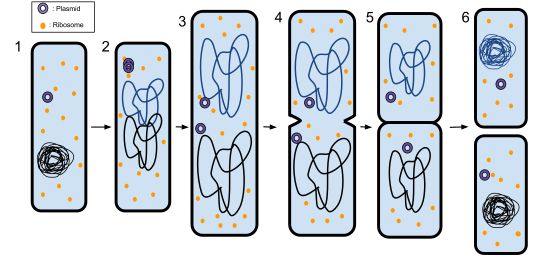Binary fission facts for kids
Binary fission ("division in half") is a kind of asexual reproduction. It is the most common form of reproduction in prokaryotes such as bacteria. It occurs in some single-celled Eukaryotes like the Amoeba and the Paramoecium. In binary fission DNA replication and segregation occur simultaneously.
In binary fission, the fully grown parent cell splits into two halves, producing two pools. After replicating its genetic material, the parent cell divides into two equal sized daughter cells. The genetic material is replicated, then equally split. The daughter cells are genetically identical (unless a mutation occurs during replication).
During binary fission, the DNA molecule divides and forms two DNA molecules. The cell then grows to create room for each molecule to move towards the opposite side of the bacterium. At the same time, the cell membrane divides to form 2 daughter cells. After division, the new cells grow and the process repeats itself.
Binary fission occurs in eukaryotic tissue cells, but the process is more complicated: see mitosis.
Basically, a cell copies its DNA, and then splits down the middle, creating two daughter cells.


